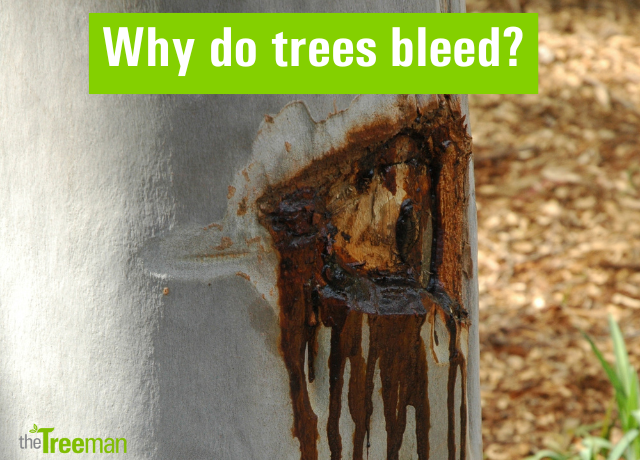
Why do trees “bleed”?
When a tree starts to “bleed” it is essentially exuding sap or resin through the bark in response to an injury or stress. Bleeding is a natural and beneficial process that can help a tree heal and protect itself, but excessive or persistent bleeding can indicate an underlying problem that may need attention.
When a tree sustains an injury, it triggers a rapid response from specialized cells to seal off the wound and prevent further harm.
As the tree “bleeds”, sap is typically released from the phloem that transports water, nutrients and sugars throughout the plant. The sap forms a protective layer over the injured area forming a barrier to prevent entry of pathogens like bacteria and fungi.
Sap may contain antimicrobial properties that help inhibit growth of microorganisms at the site of the wound, reducing the risks of infection.
Sometimes a tree will “bleed” as a way of expending energy and diverting resources e.g. those involved in growth and reproduction, until the wound has healed.
Bleeding plays a crucial role in maintaining good health and integrity in a plants vascular system.
When a tree bleeds persistently and indefinitely, then there is likely to be a problem. This could be a wound that is unable to heal properly, a pathogen infection, stress, a defense response, or a systemic problem such as root damage. Identify the cause and you may be able to alleviate the problem and improve the health of your tree.